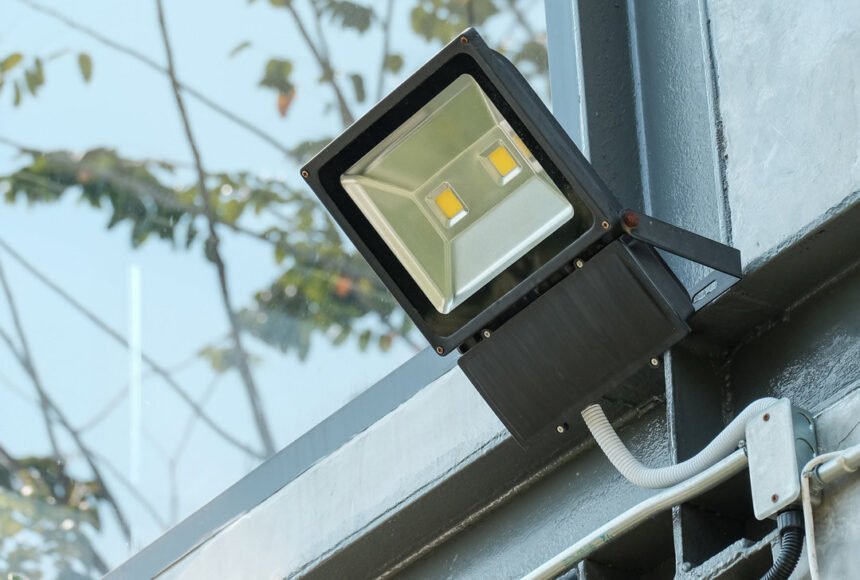LED flood lights have transformed outdoor and large-area lighting with their energy efficiency, durability, and versatility. From increasing security around your property to lighting sports fields or accentuating architectural features, choosing LED floodlights requires taking several key factors into consideration before making your decision.
LED flood lights are specially engineered to produce potency shafts of illumination across a broad expanse, making them indispensable in both industrial facilities and residential landscapes. As opposed to incandescent or halogen lighting sources, which offer limited energy efficiency or longevity benefits, these light sources boast superior energy efficiency, extended lifespan, and enhanced light quality; by becoming aware of their key features and specifications, you can make an informed decision that fulfills all your lighting requirements.
Key Points To Keep In Mind When Making Important Decisions while buying LED Flood Lights
- Brightness And Lumens
LED flood lights are measured in lumens (lm), which measures how much visible light their fixtures produce. In terms of outdoor applications such as security lighting or parking lot illumination, higher lumen output is usually necessary due to being outdoors. When deciding which brightness to buy, you should also consider other variables such as mounting height and the particular region that has to be illuminated. Many manufacturers provide lumen ratings on their products so you can gauge their intensity before purchase.
- Color Temperature
LEDs offer a wide variety of color temperatures that may be utilized, and each temperature can have an impactful impact on how warm or cool the light that it emits is perceived visually. Kelvin (K) scale is used to establish color temperature; lower values produce warmer (more yellowish), while higher ones create colder (bluer). Kelvin measures color temperature; for outdoor LED flood lights, specifically, 4000K to 5000K is often recommended as this provides visibility without excessive glare while still meeting security and general area lighting needs.
- Energy Efficiency
LED technology stands out as being energy-efficient compared to its alternatives, such as conventional lighting sources. LED luminaires have a much higher proportion of electrical energy converted into visible light than these luminaires do, which means that they need less energy and have less environmental impact. When searching for flood lights using this technology, it is wise to opt for fixtures with higher efficacies per Watt rating; such fixtures ensure maximum light production with minimum power usage – an indication of superior energy efficiency that ensures maximum light production with minimum consumption.
- Durability And Weather Resistance
Outdoor LED flood light must withstand rain, snow, heat, and humidity on an almost continuous basis; when choosing fixtures that will endure these weather extremes, durability, and weather resistance must be considered. When making this selection, consider whether they have IP (Ingress Protection) certification, which indicates their resistance against dust infiltration as this ensures reliable operation under adverse weather conditions; invest in lighting with IP65 or higher ratings like IP66 to prolong and maximize the value of your investment!
- Beam Angle And Distribution
The beam angle of LED floodlights determines their light distribution and intensity of coverage. Narrow beam angles (30 degrees or less) can provide focused lighting ideal for highlighting objects or architectural details; wide angles (120 degrees or greater) work better for broad area illumination, such as parking lots or sports fields. When selecting an ideal beam angle for your LED flood lights, keep their intended application and coverage area in mind when selecting their appropriate beam angles.
- Dimming Capabilities And Control Options
Lighting control offers great potential to maximize energy savings while meeting specific lighting levels to suit individual requirements. Many LED flood lights feature compatibility with dimmers or built-in dimming capabilities to allow users to easily regulate light intensity as desired, perfect for creating an atmosphere adapting to changing conditions throughout the day or meeting operational demands. When shopping around for floodlights with dimming capabilities, remote operation capabilities, or smart integration features. It’s wise to do your own testing for compatibility as soon as you purchase.
- Installation And Mounting Options
It is important when shopping for LED flood lights to consider ease of installation and mounting flexibility as two essential criteria. Before making your selection, verify if it includes mounting hardware that suits the desired installation site – be it walls, poles, or any other surface. Check if adjustable mounting brackets or multiple installation methods exist so as to streamline your setup process.
- Warranty And Support
A warranty provides assurance to consumers by covering any materials or craftsmanship defects that occur over a predetermined time period. When reviewing LED flood lights, it’s crucial to examine the terms and conditions of the manufacturer’s warranty policy, including periods and exclusions – this provides peace of mind against unexpected issues with durable products such as floodlights. Furthermore, consider responsive customer support provided by manufacturers who could help resolve concerns or inquiries faster than their competition can.
Conclusion
Selecting suitable LED flood lights requires striking a balance between technical specifications, environmental considerations, and practical requirements in order to guarantee maximum lighting performance and longevity. By considering such aspects as brightness, color temperature, energy efficiency, durability, beam angle dimming capabilities, installation options, warranty coverage, etc., you can confidently select LED floodlights that fulfill your specific lighting needs, whether for residential, commercial, or industrial settings – not only improving visibility security while saving on energy consumption as well as contributing towards energy savings and sustainability!



